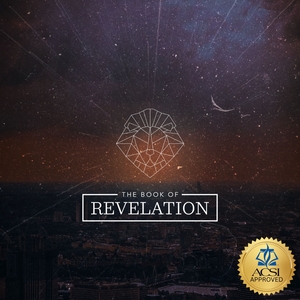Adam and Eve had Cain and Abel. Cain killed Abel and left Eden to live in the east. Where did he get his wife, since Adam and Eve were the first humans on the planet and with Cain and Abel were only four people in total?
In Genesis 2, the Bible tells how God created man and later woman on the sixth day of creation. While they lived in the Garden of Eden, Adam and Woman were the only two human beings in the world. Nevertheless, God gave these two people the command to multiply and fill the earth in Gen 1:28.
Unfortunately, Adam and Woman sinned before they could execute God's plan for reproduction. Nevertheless, the couple (now Adam and Eve) follow through on God's plan and build a family, starting with Cain and Abel.
Obviously, God's plan from the beginning was that these two people would conceive children and these children would, in turn, have their own children until the earth was filled with nations of people. God's instruction to Adam and Woman begs an obvious question: how did God expect one couple to fill the earth? To this question, the Bible offers an equally obvious (if troubling) answer: God intended Adam's children to marry one another and bear children.
As we consider this answer, let's review some points of scripture.
First, Adam's family included more people than simply Eve, Cain and Abel. Gen 5:4 tells us that Adam had many sons and daughters. The first son born was Cain, and soon thereafter came Abel, but that doesn't mean other siblings weren't already living at the time Cain killed Abel.
On the contrary, Gen 4:14 indicates that there were other members of Adam's family already living as adults at the time that Cain killed Abel. Cain expressed concern when he learned from God that he must wander the world as his punishment for killing Abel, because he said he feared that others (i.e., other members of his family) would find him and take revenge against him (v.14).
Secondly, though the Bible only mentions four people by name at the point of Genesis 4, the full genealogy of Adam is provided in Chapter 5. The fact that Chapter 5 follows Chapter 4 sequentially in the Bible doesn't mean that many of the people listed in Genesis 5 weren't already alive during the events of Chapter 4. The genealogy chapters of Genesis, including Chapter 5, span long periods of time, including events described in other chapters of Genesis before or after their order in Scripture.
Therefore, we know from scripture that in the early years after the fall, Adam and Eve raised a family of many children who grew to adulthood and joined together in marriage relationships to establish the next generation. By the time Cain killed Abel, there were numerous siblings living with extended families. Later, Cain married one of his sisters (4:17) as did the rest of his siblings (5:1-5).
No answer to this question would be complete, however, unless we address the natural concern we have in hearing that God expected brothers to marry sisters.
First, we must understand that it's clear from the circumstances described in Genesis that God intended for Adam's siblings to marry and reproduce. In fact, Adam and Woman were themselves blood relatives (Gen 2:21-22), so even the first marriage united two people who shared the same DNA. Even as late as Abraham and Isaac, the custom of marrying within one's family was still an acceptable practice (Gen 24:4).
Later in the Law, God specifically outlawed sexual union between blood relatives (Leviticus 18). Likewise, today it is illegal in most (if not all) cultures for siblings to marry and produce children. Such unions are considered dangerous, since the children are at much higher risk of suffering from genetic diseases, and most incest laws are justified on the basis of this health concern.
So, why would God consider marriage between siblings to be acceptable in Adam's day but later outlaw such relationships? The answer is found in the curse placed on the Earth because of Adam's sin.
God's instructions to Adam and Woman were given while both lived in the Garden and before they had fallen into a state of sin. At that time, Adam existed as he had been created: he was perfect. His body contained no defects. In this perfect state, there would be no stigma nor health concerns over sibling marriages since every human would reproduce in perfection. It was simply the natural course established by God.
At the point of the Fall, however, God altered the state of His creation. In response to Adam's sin, God pronounced a curse on the Earth and all that came from the Earth (Gen 3:17-19). This curse directed that everything on Earth that had life would, by necessity, die a physical death and return to dust.
The death of living things was to take place through a process of decay: a slow, steady deterioration of God's perfect design culminating in the whole Earth and everything in it "wearing" out and ultimately being replaced (Isaiah 51:6; Psalms 102:25-26; Heb 1:10-12). Our bodies will be replaced at the resurrection and the world itself is replaced with the coming of the new Heavens and Earth.
The effects of this curse have become evident in stages. Early generations of men showed little evidence of the curse in the fact that they continued to live very long natural lives, probably because the genetic defects that God ordained to produce the disease and physical frailty leading to death were far less prevalent in those early generations. Nevertheless, Adam's descendants all died eventually as the curse required (Rom 5:14), and over time the defects in human DNA multiplied generation over generation, until disease and other physical frailties caused a decreasing lifespan.
By the time Israel left Egypt during the Exodus, the population of men and women in Israel was plentiful, eliminating the necessity for brothers to marry sisters. Furthermore, genetic defects in the population had accumulated to the point that the health risks of marrying family members were too great to permit the practice any longer. So, God outlawed it.
Scripture quotations taken from the (NASB®) New American Standard Bible®, Copyright © 1995, 2020 by The Lockman Foundation. Used by permission. All rights reserved. www.lockman.org








